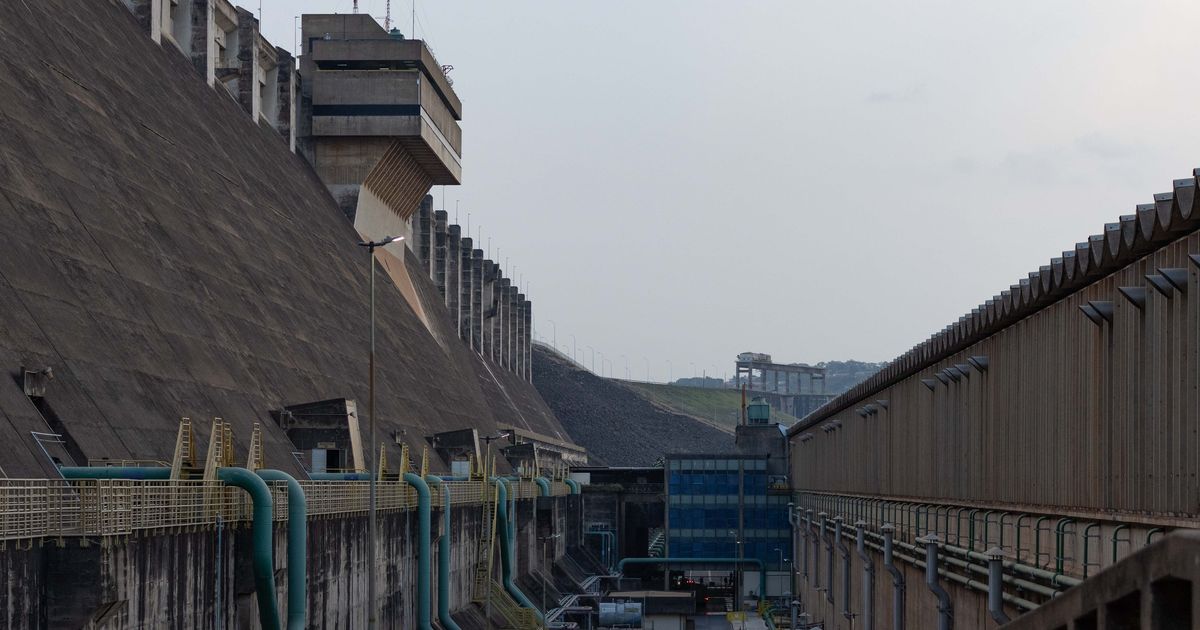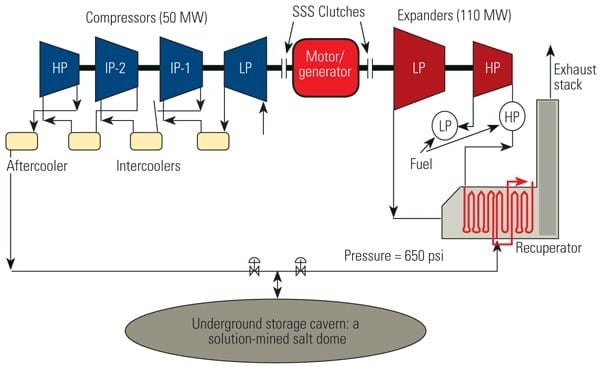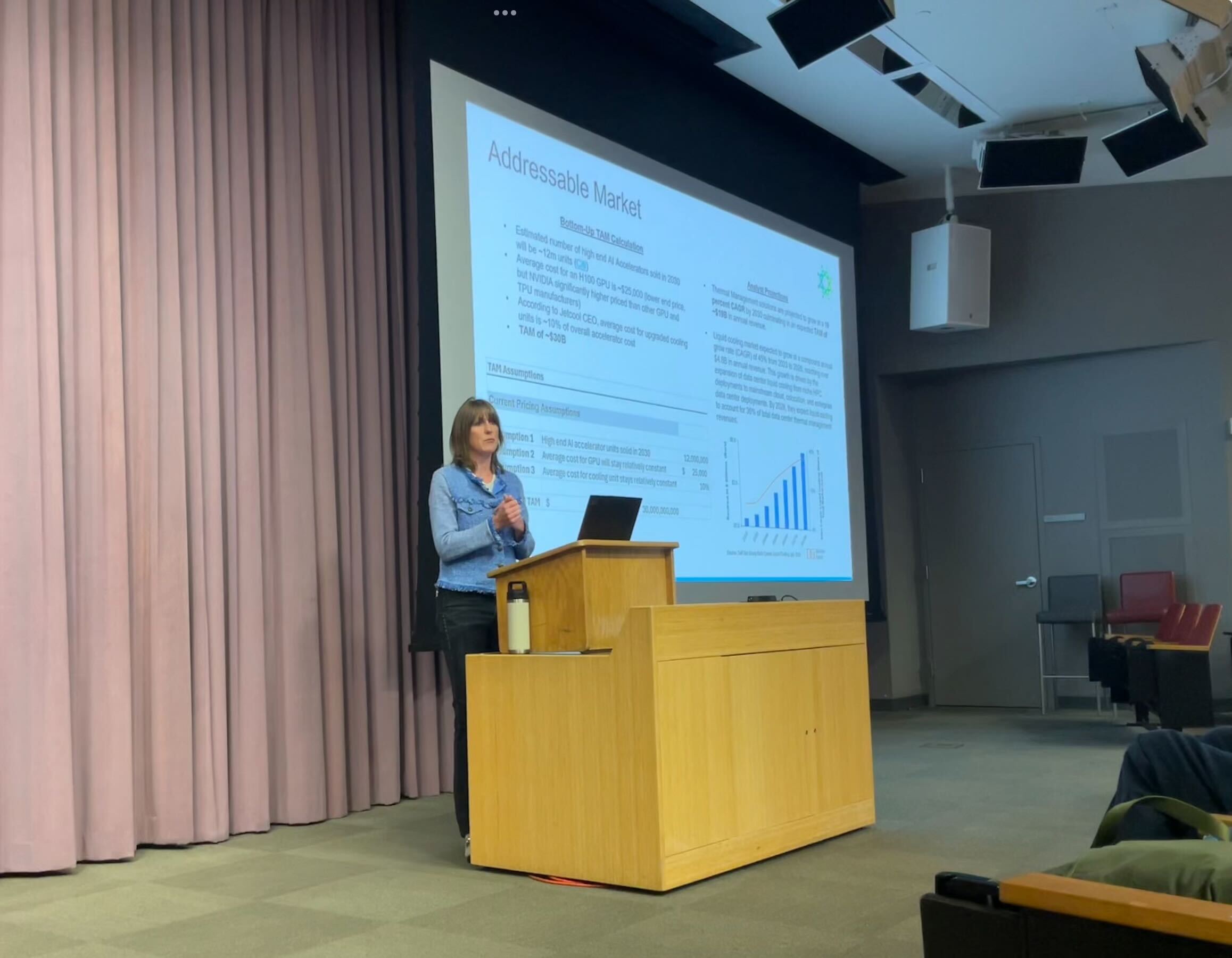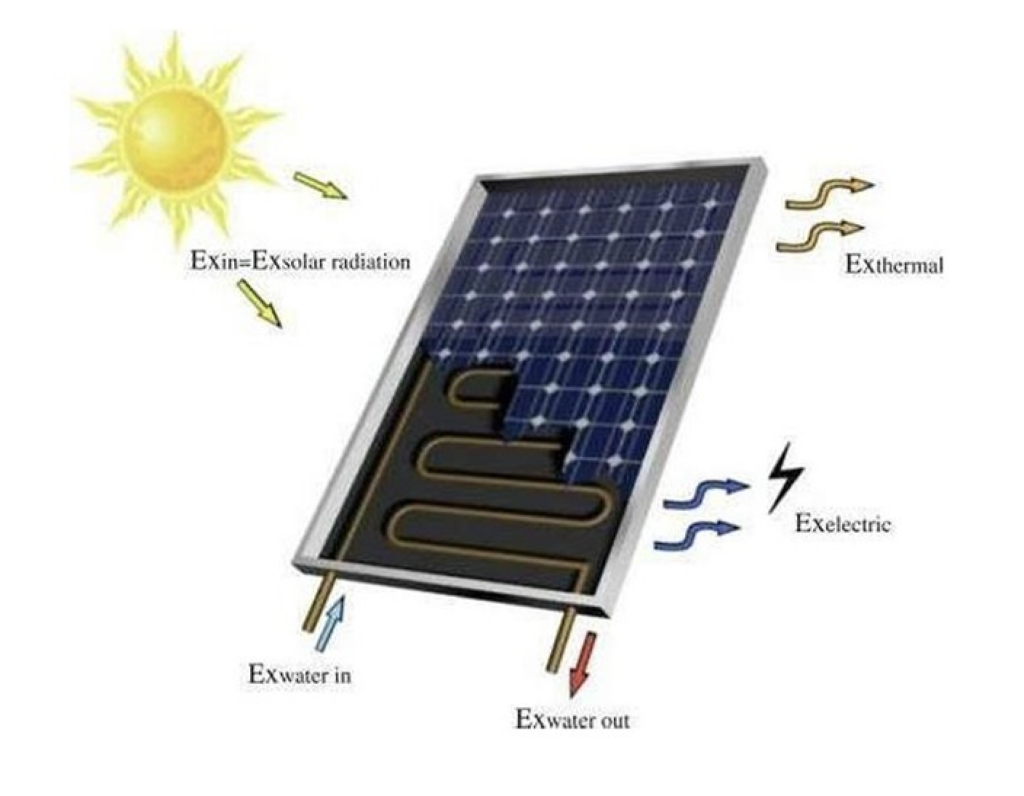Hydropower is getting less reliable as the world needs more energy – The Spokesman-Review

Report on the State of Global Hydropower and its Alignment with Sustainable Development Goals
Executive Summary
This report examines the challenges facing the global hydroelectric power sector, a critical component of achieving Sustainable Development Goal 7 (SDG 7: Affordable and Clean Energy). Using the Tucuruí Dam in Brazil as a case study, it analyzes the impacts of climate change, aging infrastructure, and environmental and social concerns. The findings highlight a growing tension between the need for clean energy and the imperatives of SDG 13 (Climate Action), SDG 6 (Clean Water and Sanitation), SDG 11 (Sustainable Cities and Communities), and SDG 15 (Life on Land). The report concludes that a strategy of modernization, diversification, and stringent social-environmental governance is necessary for hydropower to remain a viable contributor to the 2030 Agenda for Sustainable Development.
The Intersection of Climate Change and Clean Energy Goals
Challenges to SDG 7: Affordable and Clean Energy
Hydropower, the world’s third-largest source of electricity, is facing unprecedented challenges that threaten its reliability and its role in achieving SDG 7. Climate change is the primary driver of this instability.
- Climate Volatility: Extreme weather events, a direct consequence of the climate crisis addressed in SDG 13, are making hydropower less reliable. Droughts have led to significant production decreases in Brazil, Canada, China, and the United States. Conversely, excessive rainfall and flooding can damage plant equipment.
- Global Production Decline: In 2023, global hydroelectricity production saw its largest annual decline since 1965. This drop is equivalent to the annual power consumption of a nation like Chile, placing significant strain on global energy grids.
- Brazilian Case: In Brazil, where hydropower has traditionally supplied over half the nation’s electricity, production fell by 3% last year. The country now generates less than half of its hydroelectric capacity, complicating efforts to meet growing energy demands sustainably.
A Case Study in Infrastructure Resilience and Adaptation: The Tucuruí Dam
Modernization Efforts for SDG 9: Industry, Innovation, and Infrastructure
The 40-year-old Tucuruí Dam in Brazil exemplifies the challenges of aging infrastructure. In response, its owner, AXIA Energia, is undertaking a major modernization project aligned with the principles of SDG 9, which calls for building resilient infrastructure.
- Infrastructure Upgrade: A $270 million, five-year project is underway to replace generators and transformers, upgrade substations, and automate equipment.
- Enhancing Efficiency: The goal is to extend the plant’s life and make it more efficient and flexible to cope with volatile weather conditions.
- Protecting Assets: This investment is critical to securing one of Brazil’s most important energy assets and ensuring a stable power supply for its economic development (SDG 8).
Diversification Strategy in Pursuit of SDG 7
Recognizing the increasing unreliability of hydropower, Brazil is diversifying its energy portfolio, a key strategy for ensuring a stable and sustainable energy future under SDG 7.
- Growth of Renewables: Brazil has significantly increased its reliance on solar and wind power. In a recent milestone, these two sources provided over a third of the nation’s electricity for the first time.
- Solar Expansion: Solar energy generation has grown tenfold since 2019, now accounting for approximately 10% of Brazil’s electricity.
- Contingency Planning: This diversification acts as an “insurance policy” against climate-induced shortfalls in hydropower, enhancing the resilience of the national grid.
Balancing Energy Needs with Environmental and Social Safeguards
Impacts on SDG 15 (Life on Land) and SDG 11 (Sustainable Communities)
The expansion of hydropower, both past and present, has often come at a significant cost to ecosystems and local populations, creating direct conflicts with multiple SDGs.
- Deforestation and Habitat Loss: The construction of large dams frequently requires clearing vast tracts of forest, as seen in the Amazon. This directly undermines SDG 15 by contributing to deforestation and threatening biodiversity, including river dolphins and other wildlife.
- Displacement of Communities: Projects like Tucuruí and Belo Monte have displaced thousands of people, disrupting local livelihoods and communities. This social impact is in direct opposition to the goals of SDG 11, which aims to create inclusive and sustainable human settlements.
- Downstream Water Scarcity: New large-scale projects, such as China’s planned dam on the Yarlung Tsangpo River, raise concerns about water security for downstream nations like India and Bangladesh, potentially jeopardizing SDG 6.
The Future of Hydropower in the Global Energy Transition
The Global Debate: Expansion vs. Restoration
A global debate is underway regarding the future role of hydropower in the clean energy transition, pitting the urgent need for electricity against critical environmental and social protections.
- Argument for Expansion: Proponents, including the International Energy Agency, argue that more hydropower is essential to meet rising global energy demand and provide electricity to the 600 million people currently without access (SDG 7).
- Argument for Restoration: Environmental groups and activists advocate for focusing on modernizing and improving the efficiency of existing dams rather than building new ones, thereby avoiding the well-documented negative impacts on communities and ecosystems.
- Industry Acknowledgment: The International Hydropower Association acknowledges past harms and suggests that newer technologies, like pumped hydropower, can offer solutions with smaller environmental footprints.
Recommendations and Path Forward
To ensure hydropower contributes positively to the Sustainable Development Goals, a multi-faceted approach is required.
- Prioritize Modernization: Focus investment on upgrading existing facilities to enhance efficiency and resilience, in line with SDG 9.
- Accelerate Diversification: Continue to integrate other renewable sources like wind and solar to create a more stable and less climate-dependent energy system (SDG 7).
- Enforce Strict Standards: Mandate that any new hydropower projects adhere to rigorous environmental and social impact assessments to protect communities (SDG 11) and ecosystems (SDG 15).
- Foster International Cooperation: Ensure transboundary river projects involve cooperation and transparent communication to safeguard water access for all nations (SDG 6).
Analysis of Sustainable Development Goals in the Article
1. Which SDGs are addressed or connected to the issues highlighted in the article?
- SDG 7: Affordable and Clean Energy – The article’s central theme is hydroelectric power, a major source of clean energy, and the challenges it faces. It also discusses the shift towards other renewables like solar and wind.
- SDG 13: Climate Action – The article extensively discusses the impacts of climate change, such as extreme weather, droughts, and floods, on hydropower production and the need for adaptation strategies.
- SDG 15: Life on Land – The connection between the Amazon rainforest, deforestation, wildfires, and the health of the river basin is a key issue, highlighting the impact on terrestrial ecosystems.
- SDG 6: Clean Water and Sanitation – The article focuses on the management of a major river basin, water levels in reservoirs, and the impacts of both drought and flooding, which are central to water resource management.
- SDG 9: Industry, Innovation, and Infrastructure – The modernization of the Tucuruí Dam is a prime example of upgrading critical infrastructure to be more resilient and efficient.
- SDG 11: Sustainable Cities and Communities – The article touches upon the social impacts of dam construction, specifically the displacement of local communities and villagers.
2. What specific targets under those SDGs can be identified based on the article’s content?
-
SDG 7: Affordable and Clean Energy
- Target 7.2: By 2030, increase substantially the share of renewable energy in the global energy mix. The article discusses Brazil’s reliance on hydropower and its increasing use of wind and solar energy, stating that in August, “those two sources provided more than a third of the nation’s electricity for the first time.”
- Target 7.a: By 2030, enhance international cooperation to facilitate access to clean energy research and technology… and promote investment in energy infrastructure and clean energy technology. The article mentions the $270 million investment by AXIA Energia to modernize the Tucuruí plant, which includes upgrading generators and automating equipment to improve efficiency.
-
SDG 13: Climate Action
- Target 13.1: Strengthen resilience and adaptive capacity to climate-related hazards and natural disasters in all countries. The article highlights how extreme weather (droughts and floods) has made hydropower less reliable. The company CEO states, “I cannot control if it’s going to rain or not, but I can build scenarios based on a lot of rain, less rain… The best insurance policy that you have is contingency plans,” which directly addresses building adaptive capacity.
-
SDG 15: Life on Land
- Target 15.1: By 2020, ensure the conservation, restoration and sustainable use of terrestrial and inland freshwater ecosystems and their services, in particular forests, wetlands, mountains and drylands. The article discusses threats to the Amazon rainforest from deforestation and fires, noting that “wildfires consumed an area of the Amazon as big as California.” It also mentions that authorities use “boat patrols to monitor the health and safety of the rainforest, river and wildlife.”
- Target 15.2: By 2020, promote the implementation of sustainable management of all types of forests, halt deforestation, restore degraded forests and substantially increase afforestation and reforestation globally. The article describes how farmers “set fires to clear forests to create cattle pastures,” a direct reference to the drivers of deforestation that need to be managed.
-
SDG 6: Clean Water and Sanitation
- Target 6.5: By 2030, implement integrated water resources management at all levels, including through transboundary cooperation as appropriate. The article’s focus on the challenges of managing a major river basin (Tocantins River) in the face of climate variability (droughts and floods) points to the need for integrated management. China’s project on the Yarlung Tsangpo River raises concerns about transboundary water management for India and Bangladesh.
- Target 6.6: By 2020, protect and restore water-related ecosystems, including mountains, forests, wetlands, rivers, aquifers and lakes. The article mentions the displacement of villagers and impacts on rivers from dam construction, and the monitoring of wildlife, “including the dolphins that live in these waters,” which relates to protecting water-related ecosystems.
-
SDG 9: Industry, Innovation, and Infrastructure
- Target 9.1: Develop quality, reliable, sustainable and resilient infrastructure… to support economic development and human well-being. The entire discussion of the Tucuruí Dam, a massive piece of infrastructure, and the $270 million project to “modernize Tucuruí, extend its life and undo some of the damage that age and weather have inflicted on it” directly relates to developing resilient infrastructure.
-
SDG 11: Sustainable Cities and Communities
- Target 11.a: Support positive economic, social and environmental links between urban, peri-urban and rural areas by strengthening national and regional development planning. The article notes that “Villagers along the Xingu River in Brazil have fought against hydroelectric dams after thousands were displaced by the construction of Tucuruí and another power plant.” This highlights the negative social impacts on rural communities from large-scale development projects and the need for better planning.
3. Are there any indicators mentioned or implied in the article that can be used to measure progress towards the identified targets?
-
SDG 7: Affordable and Clean Energy
- Indicator for Target 7.2: The share of renewable energy in total final energy consumption. The article provides specific data points: “Hydro energy production fell 3% in Brazil last year,” “Hydropower produced 48% of Brazil’s electricity in August,” and “solar generated about 10% of Brazil’s electricity, roughly 10 times what it did toward the end of 2019.”
- Indicator for Target 7.a: Financial flows to developing countries in support of clean energy. The article mentions a specific investment: “spending $270 million to modernize Tucuruí.”
-
SDG 13: Climate Action
- Indicator for Target 13.1: Number of countries with national and local disaster risk reduction strategies. While not a number, the article implies the existence of such a strategy at the corporate level through the CEO’s mention of creating “Contingency One, Contingency Two” plans to manage risks from extreme weather.
-
SDG 15: Life on Land
- Indicator for Target 15.1/15.2: Forest area as a proportion of total land area. The article provides a qualitative and quantitative measure of deforestation and forest degradation: “land is charred where farmers have set fires to clear forests to create cattle pastures” and “wildfires consumed an area of the Amazon as big as California.”
-
SDG 11: Sustainable Cities and Communities
- Indicator for Target 11.1 (related): Proportion of population living in slums, informal settlements or inadequate housing. The article implies a negative indicator by mentioning that “thousands were displaced by the construction of Tucuruí and another power plant,” pointing to a loss of housing and community lands.
4. Summary Table of SDGs, Targets, and Indicators
| SDGs | Targets | Indicators |
|---|---|---|
| SDG 7: Affordable and Clean Energy | 7.2: Increase the share of renewable energy in the global energy mix. | Percentage of electricity generated by different renewable sources (e.g., “solar generated about 10% of Brazil’s electricity”; “wind and solar… provided more than a third of the nation’s electricity”). |
| SDG 13: Climate Action | 13.1: Strengthen resilience and adaptive capacity to climate-related hazards. | Implementation of adaptation strategies (e.g., company creating “contingency plans” for high and low rainfall scenarios). |
| SDG 15: Life on Land | 15.2: Halt deforestation and restore degraded forests. | Area of forest loss due to specific causes (e.g., “wildfires consumed an area of the Amazon as big as California”; “fires to clear forests to create cattle pastures”). |
| SDG 6: Clean Water and Sanitation | 6.5: Implement integrated water resources management. | Challenges to water management due to climate variability (e.g., droughts causing low reservoirs, floods damaging equipment). |
| SDG 9: Industry, Innovation, and Infrastructure | 9.1: Develop quality, reliable, sustainable and resilient infrastructure. | Investment in infrastructure modernization (e.g., “$270 million to modernize Tucuruí” to make it more efficient and resilient). |
| SDG 11: Sustainable Cities and Communities | 11.a: Support positive… links between… rural areas by strengthening… development planning. | Number of people displaced by infrastructure projects (e.g., “thousands were displaced by the construction of Tucuruí”). |
Source: spokesman.com
What is Your Reaction?
 Like
0
Like
0
 Dislike
0
Dislike
0
 Love
0
Love
0
 Funny
0
Funny
0
 Angry
0
Angry
0
 Sad
0
Sad
0
 Wow
0
Wow
0




















































.jpg.webp?itok=0ZsAnae9#)



























